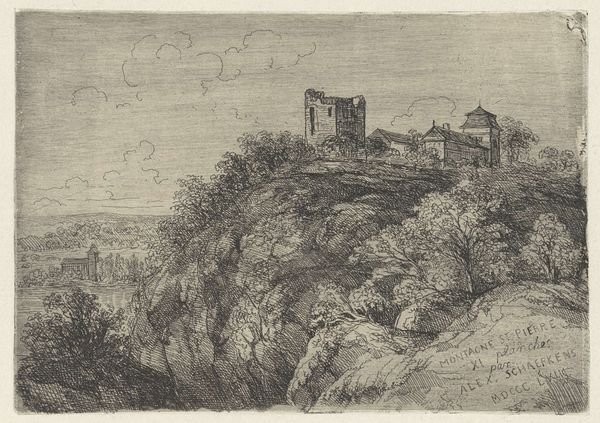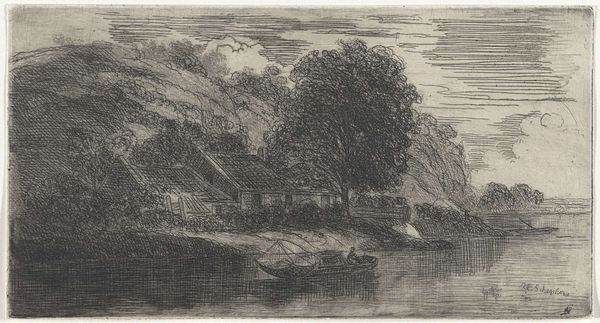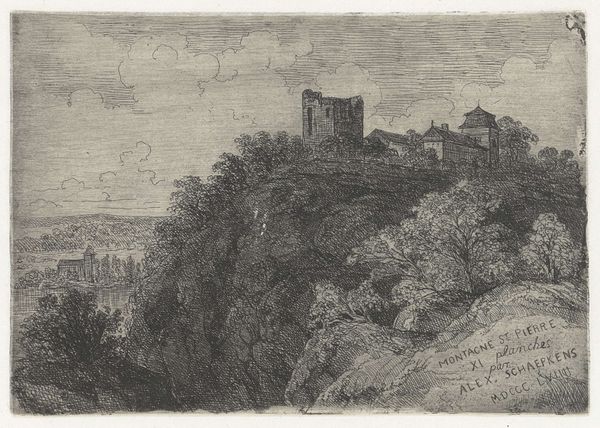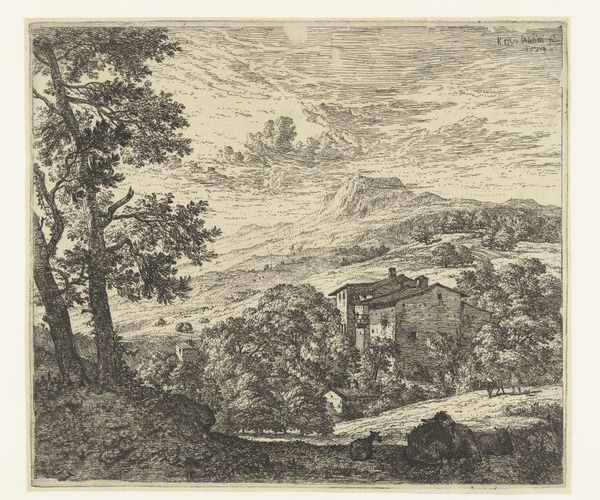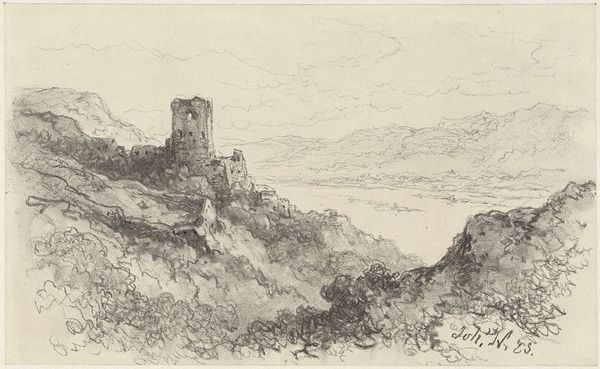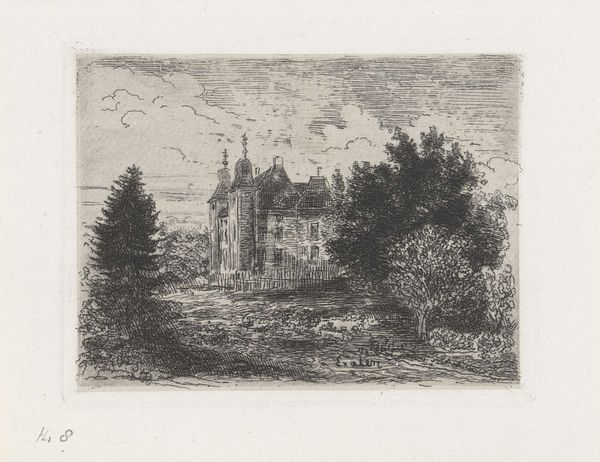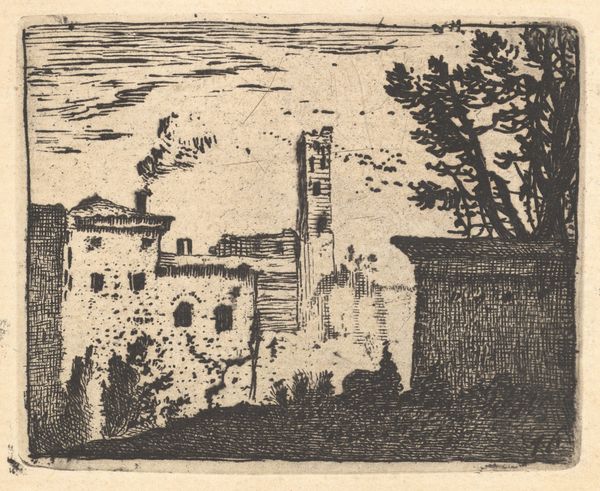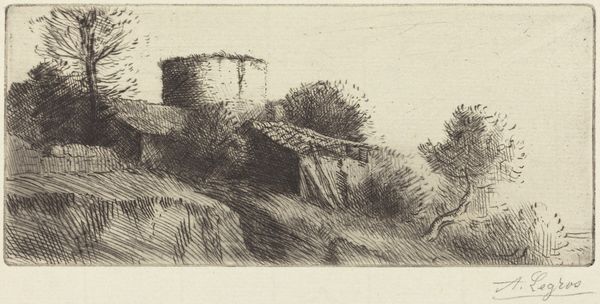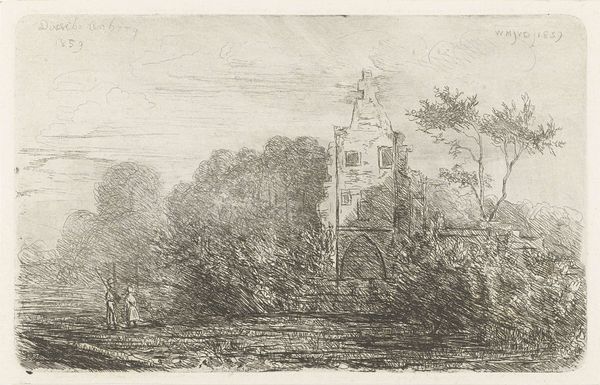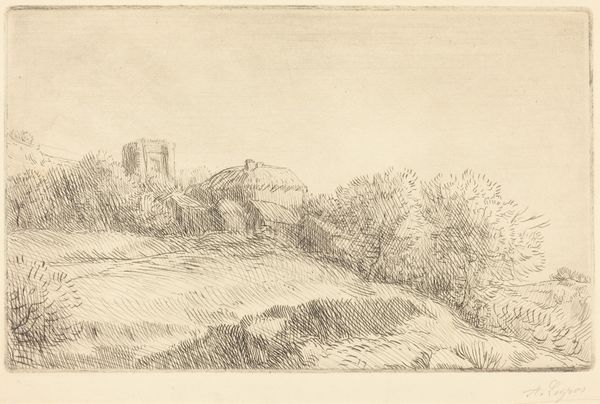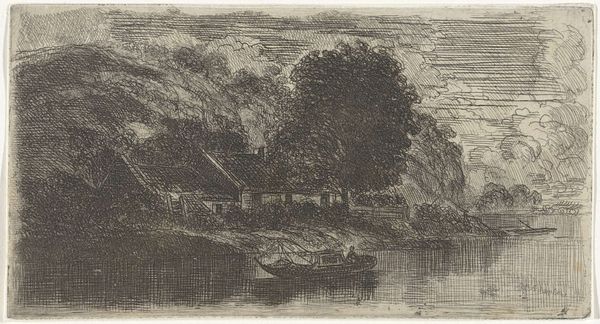
Dimensions: height 97 mm, width 152 mm
Copyright: Rijks Museum: Open Domain
Curator: We are looking at Jan Frederik van Deventer's "Heuvellandschap met ruïne," or "Hill Landscape with Ruins," an etching and pencil drawing completed sometime between 1832 and 1879. Editor: The atmospheric effect achieved through such minimal lines is striking. There’s a sense of solitude here, enhanced by the textural contrast between the sky, rendered with almost frantic strokes, and the quiet immobility of the architecture. Curator: It is indeed the interplay between nature and architecture which captures my eye. Consider how the ruins almost organically arise from the hill, echoing the forms of the trees clustered nearby. Editor: The ruins feel almost oppressive against the light strokes on the left, which could perhaps signify a distant town? It strikes me that this would have to be somewhere along a road for the scene to unfold in this fashion, unless, of course, it simply came about out of the artist’s imagination. Curator: Given that the style trends into Romanticism, one cannot neglect the inherent interest that artistic circles had at the time for the pre-industrial state. Consider, also, how many artistic compositions included themes surrounding ruins, reflecting perhaps the rise and fall of empires and how everything returns to nature in time. Editor: Certainly, ruins function almost as a metaphor during that period. Beyond that, I also observe a kind of self-conscious formalism here: note the framing of the central ruined structure using vertical trees against the cloudy, linear strokes of the sky above and the grassy patterns along the ground. Everything serves the aesthetic whole of the work. Curator: An astute point. Considering both history and artistic technique deepens our appreciation for such works as this one. It’s clear how Deventer harnessed not just the appearance, but the weight of history in simple etching. Editor: Absolutely. Examining the formalist element and the social element yields the artwork’s total meaning; considering these allows the viewer an insight to what makes "Heuvellandschap met ruïne" truly resonate, and gives reason for it to persist even today.
Comments
No comments
Be the first to comment and join the conversation on the ultimate creative platform.
